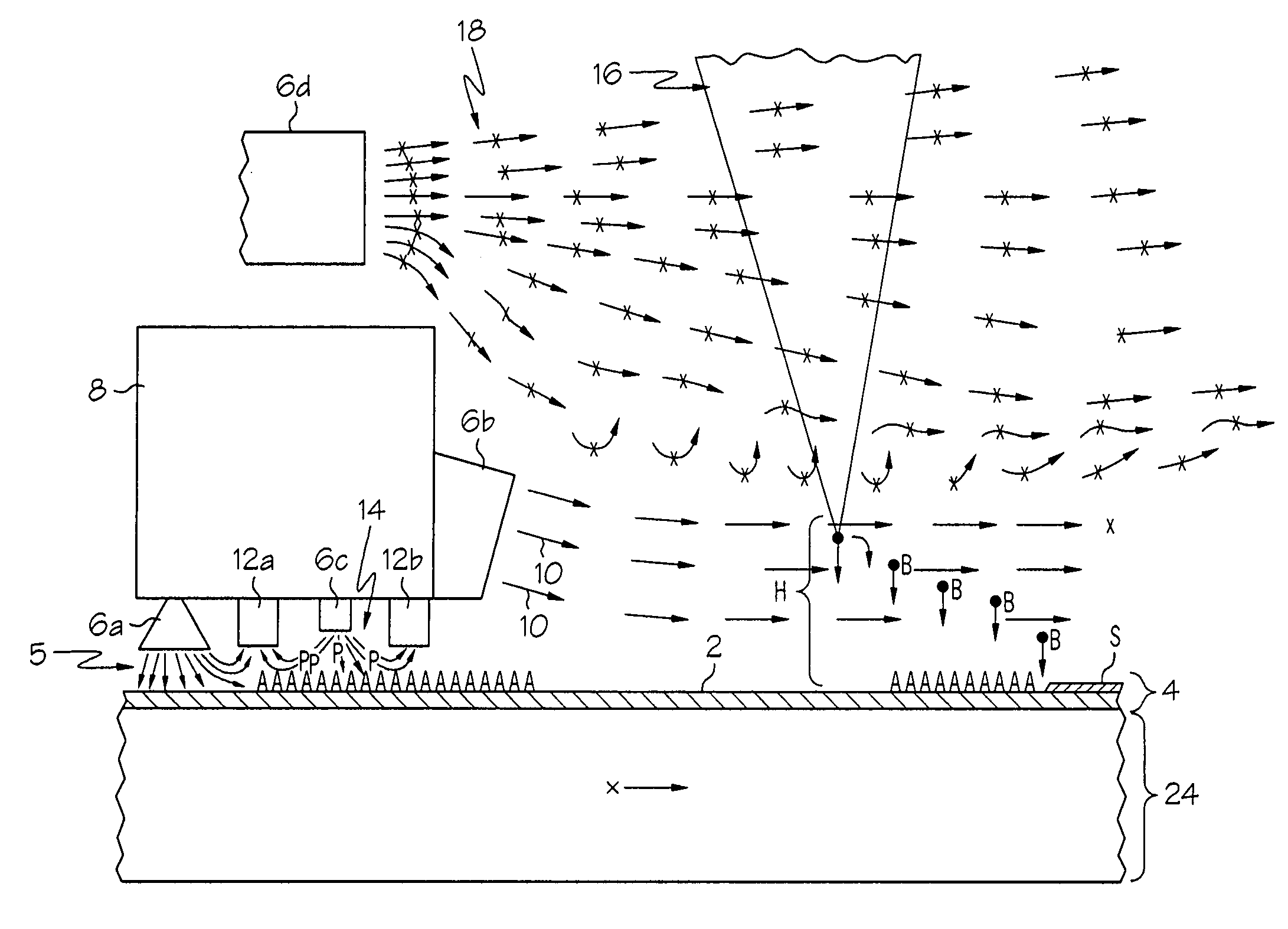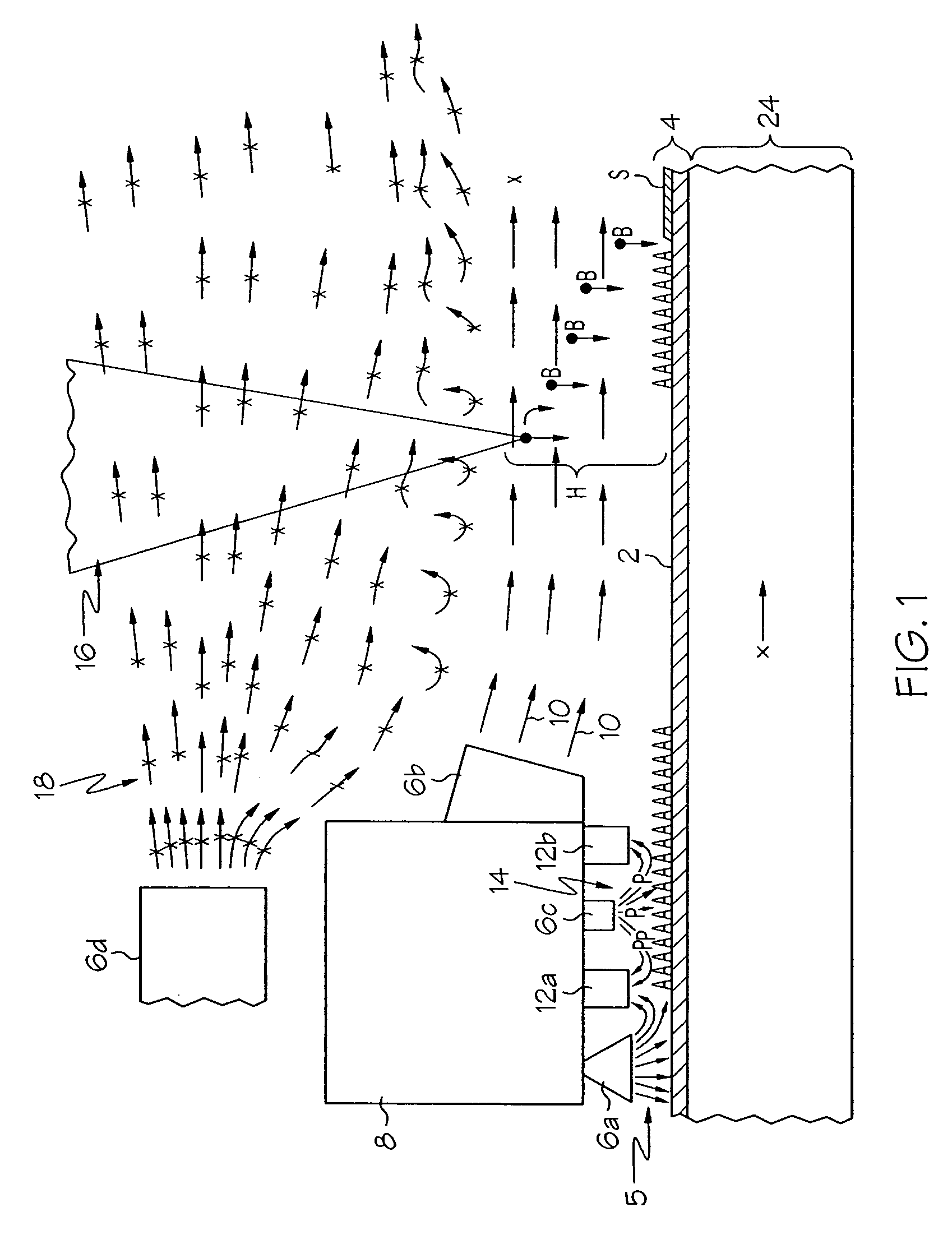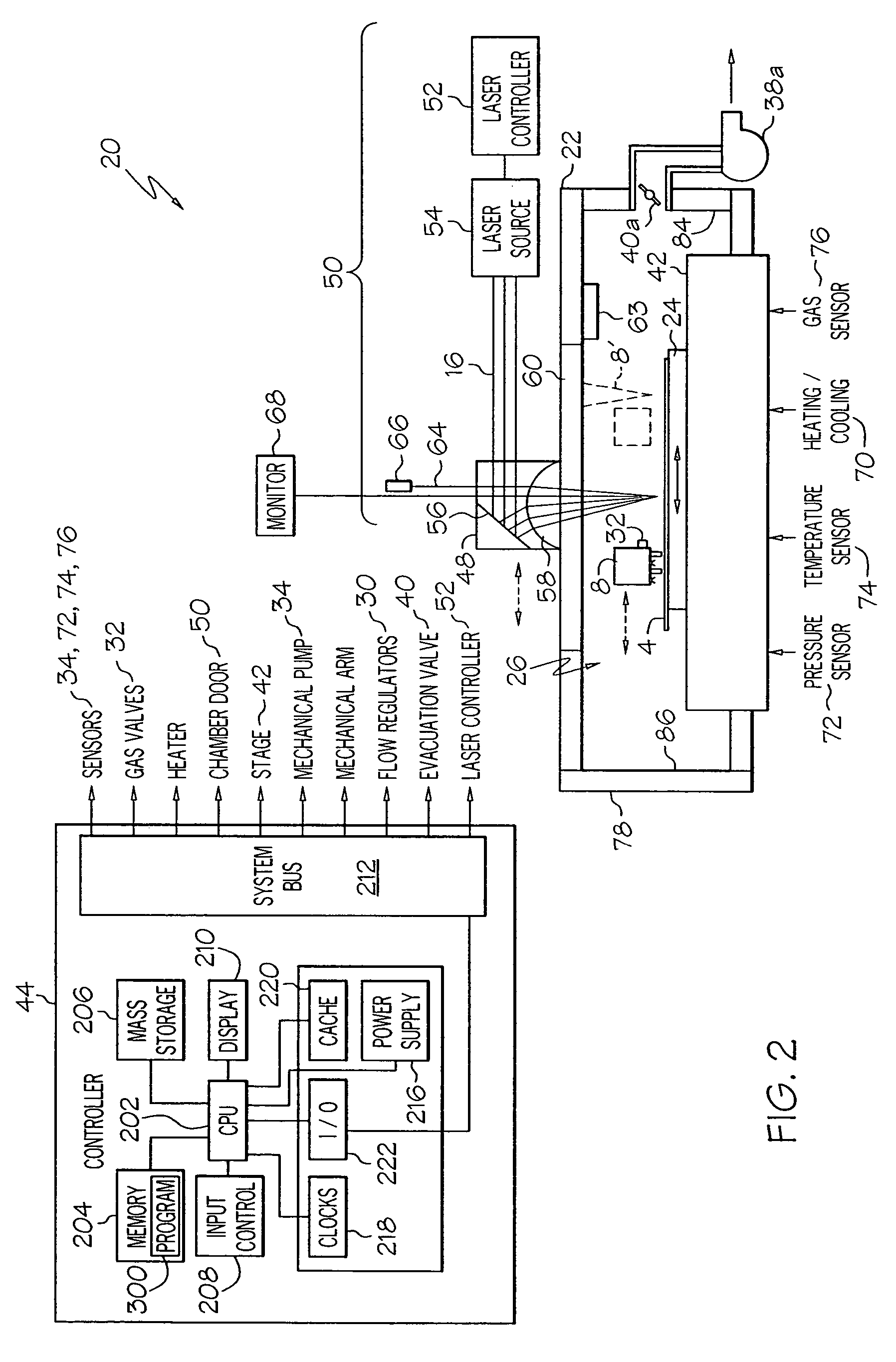Atomic layer deposition with point of use generated reactive gas species
a technology of reactive gas and atomic layer, which is applied in the direction of spraying apparatus, spraying discharge apparatus, coating, etc., can solve the problem of difficult to generate a high flux of short-lived reactive gas species on the surface of the wafer, and achieve the effect of fast rate and higher processing throughpu
- Summary
- Abstract
- Description
- Claims
- Application Information
AI Technical Summary
Benefits of technology
Problems solved by technology
Method used
Image
Examples
Embodiment Construction
[0019]In the following detailed description that follows, reference is made to various specific embodiments in which the invention may be practiced. These embodiments are described in sufficient detail to enable those skilled in the art to practice the invention, and it is to be understood that other embodiments may be utilized and that specific equipment, processing steps, energy sources, and other changes may be made without departing from the spirit and scope of the present invention.
[0020]The term “workpiece” as used herein includes semiconductor substrate, printed circuits, and other structures that may be chemically treated by the method and system of the invention.
[0021]The terms “substrate” as used herein include any semiconductor-based or other structure having an exposed surface in which to form a structure using the system or method of this invention. Substrate is to be understood as including silicon-on-insulator, doped and undoped semiconductors, epitaxial layers of sil...
PUM
| Property | Measurement | Unit |
|---|---|---|
| Temperature | aaaaa | aaaaa |
| Flow rate | aaaaa | aaaaa |
| Length | aaaaa | aaaaa |
Abstract
Description
Claims
Application Information
 Login to View More
Login to View More - R&D
- Intellectual Property
- Life Sciences
- Materials
- Tech Scout
- Unparalleled Data Quality
- Higher Quality Content
- 60% Fewer Hallucinations
Browse by: Latest US Patents, China's latest patents, Technical Efficacy Thesaurus, Application Domain, Technology Topic, Popular Technical Reports.
© 2025 PatSnap. All rights reserved.Legal|Privacy policy|Modern Slavery Act Transparency Statement|Sitemap|About US| Contact US: help@patsnap.com



